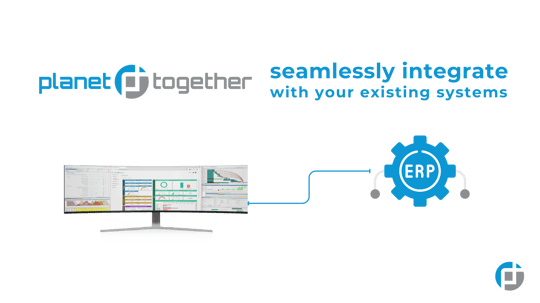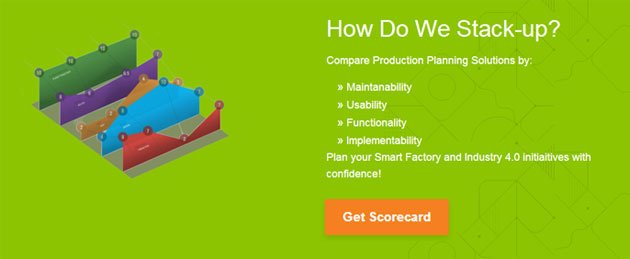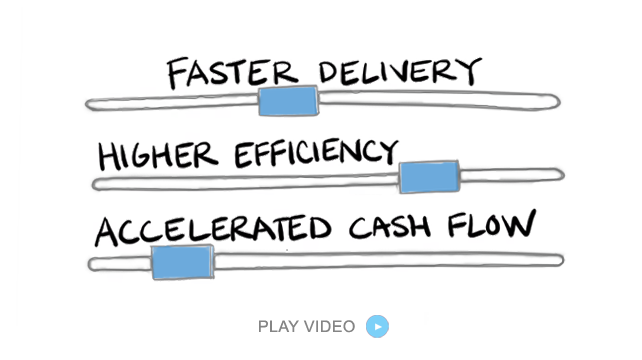Combining IoT Data with APS: How Industrial Production Planners Can Avoid Downtime and Plan Ahead
In industrial manufacturing, the role of the production planner has evolved far beyond simply managing schedules. Planners are now expected to proactively manage risks, optimize resource utilization, and drive continuous improvement — all while ensuring on-time delivery and high product quality.
One of the most powerful tools transforming this role is the combination of Internet of Things (IoT) data with Advanced Planning and Scheduling (APS) systems. By leveraging IoT sensor data across machines, production lines, and supply networks, planners gain real-time insights into equipment health, performance trends, and potential risks. When this data is fed into an APS solution like PlanetTogether, and further integrated with enterprise systems like SAP, Oracle, Microsoft Dynamics, Kinaxis, or Aveva, it creates a powerful planning ecosystem that helps industrial facilities not just react to issues — but predict and avoid them altogether.
Let’s break down how this integration works and why it’s becoming a game-changer for industrial manufacturing planners.
The Challenge: Downtime and Disruption in Industrial Manufacturing
Downtime is the hidden enemy of industrial production. Whether caused by unexpected machine failure, material shortages, or labor constraints, every hour of downtime can mean thousands — or even millions — in lost revenue, missed deliveries, and strained customer relationships.
For production planners, avoiding downtime is not just about reacting faster; it’s about planning ahead. Traditional ERP and MES systems provide valuable historical and transactional data, but they often lack real-time visibility into shop floor performance and asset health. That’s where IoT technology steps in.
Enter IoT: Unlocking Real-Time Insights
IoT in industrial manufacturing refers to networks of connected sensors, devices, and machines that continuously generate data — from vibration patterns on a motor, to temperature readings in a furnace, to the speed and pressure within a bottling line.
This data offers production planners several critical insights:
Machine performance trends: Identifying gradual degradation before failure occurs.
Environmental impacts: Monitoring temperature, humidity, or pressure that could affect material quality or equipment wear.
Energy consumption: Tracking power use to optimize energy efficiency.
Material and inventory flow: Providing real-time data on the movement and availability of components.
While having IoT data is powerful, it’s only truly useful when planners can translate it into actionable plans. That’s where APS integration comes in.
![]()

The Power of Combining IoT Data with APS
Advanced Planning and Scheduling systems like PlanetTogether take operational data and turn it into optimized production schedules. But when planners combine PlanetTogether APS with IoT feeds, the system becomes even smarter:
Predictive scheduling: APS can factor in equipment health forecasts from IoT sensors to avoid scheduling critical jobs on machines likely to require maintenance.
Dynamic rescheduling: When IoT data signals an issue (e.g., a bottleneck or slowdown), APS can automatically adjust the plan and reallocate resources in real time.
Proactive material planning: IoT inventory sensors provide accurate stock levels, reducing the risk of material shortages and improving just-in-time (JIT) planning.
Energy-aware scheduling: Combining IoT energy data with APS allows planners to shift energy-intensive operations to off-peak hours, lowering costs.
When integrated with enterprise systems like SAP, Oracle, Microsoft, Kinaxis, or Aveva, this combined APS-IoT intelligence becomes part of a larger digital ecosystem. It enables seamless coordination across purchasing, finance, maintenance, and logistics — ensuring that every part of the business is aligned.
A Practical Example: Avoiding Downtime in a Multi-Line Facility
Consider an industrial manufacturing plant with several parallel production lines producing high-mix, low-volume components. Traditionally, the production planner relies on past performance data and ERP system information to schedule production. But this approach has blind spots.
Now, imagine the plant has deployed IoT sensors across its critical machines — monitoring vibration, temperature, and throughput in real time. This sensor data is fed into PlanetTogether APS, which is integrated with the plant’s SAP ERP system.
Here’s how the system works together:
Real-time alerts: IoT sensors detect early signs of wear on a key motor. This triggers a predictive maintenance alert.
APS integration: PlanetTogether automatically recalculates the production schedule, shifting sensitive orders away from the affected line and redistributing workloads to other lines.
ERP coordination: SAP updates work orders, purchase orders for spare parts, and notifies the maintenance team to schedule repairs without manual intervention.
Cost savings: Downtime is avoided, throughput is maintained, and the production planner maintains delivery commitments — all without scrambling or last-minute firefighting.

Integration Matters: The Role of ERP and Enterprise Systems
To unlock the full value of IoT and APS, integration with enterprise platforms is essential. Systems like SAP, Oracle, Microsoft Dynamics, Kinaxis, and Aveva act as the backbone of industrial operations, managing everything from financials and procurement to compliance and supply chain logistics.
By connecting PlanetTogether APS with these ERP systems, manufacturers achieve:
Seamless data flow: No more siloed systems or manual data transfers.
Cross-functional alignment: Maintenance, operations, and supply chain teams all work from the same real-time plan.
End-to-end visibility: Planners can see not just what’s happening on the shop floor, but how it impacts downstream processes like customer deliveries and upstream processes like supplier orders.
Key Takeaways for Production Planners
For production planners in industrial manufacturing, the path forward is clear: Adopt IoT-enabled insights to gain real-time visibility.
Integrate IoT with APS like PlanetTogether for predictive, agile scheduling.
Connect APS with ERP systems (SAP, Oracle, Microsoft, Kinaxis, Aveva) for enterprise-wide coordination.
Move from reactive to proactive planning to avoid downtime and improve delivery performance.
By embracing this integrated approach, planners become strategic enablers — not just keeping the lines running, but driving continuous improvement and business value.
Building the Smart Factory of the Future
The convergence of IoT, APS, and ERP is not just a technology upgrade; it’s a step toward the smart factory of the future. In this vision, production planners sit at the center of a digitally connected ecosystem, where machines, systems, and people work together seamlessly to optimize performance.
By investing in IoT and APS integration today, industrial manufacturers set the foundation for more adaptive, efficient, and competitive operations tomorrow.
Are you ready to take your manufacturing operations to the next level? Contact us today to learn more about how PlanetTogether can help you achieve your goals and drive success in your industry.
Topics: Industrial Manufacturing, PlanetTogether Software, Integrating PlanetTogether, Dynamic Rescheduling, Energy-Aware Scheduling, Predictive Scheduling, Proactive Material Planning





















LEAVE A COMMENT